#Joseph-Philibert Girault de Prangey
Text

Joseph-Philibert Girault de Prangey
Northwest Facade, Temple of Castor and Pollux, Rome
1842
#Joseph-Philibert Girault de Prangey#rome#ancient rome#roman columns#ancient history#ancient art#roman art#aesthetic#beauty#ancient culture#daguerreotype#vintage photography#early photography#french photographer#French photography#photography history#modern art#art history#aesthetictumblr#tumblraesthetic#tumblrpic#tumblrpictures#tumblr art#tumblrstyle#artists on tumblr
45 notes
·
View notes
Text

22. Cour de la Mosquée el Ahzar, au Kaire
The main courtyard of Al-Azhar Mosque (10th century) in Cairo, Egypt.
Collection: De Agostini Editore
De Agostini Picture Library
Joseph-Philibert Girault de Prangey | 22. Cour de la Mosquée el Ahzar, au Kaire | The Metropolitan Museum of Art (metmuseum.org)
#cairo#egypt#azhar#history#Al-Azhar Mosque#Mosquée el Ahzar#De Agostini#Joseph-Philibert Girault de Prangey#artists#Avatar#ART#VINTAGE#april fools#AP#April Fools Day#Illustration#positivity#playstation#GIF#louis tomlinson#kawaii#smosh
1 note
·
View note
Text
Check Out Some of the Oldest Photos in the World
Joseph-Philibert Girault de Prangey was a 19th-century French photographer and architect known for his pioneering work in the field of early photography and for his extensive travels and documentation of historical monuments, landscapes, and people in various regions. A recent study of his work is shown on YouTube, with photos taken in 1842, just a year or two since the advent of daguerreotype…

View On WordPress
0 notes
Note
Dogs were often used by Romans in war and viewed as protectors against evil or spirits despite not being depicted in the afterlife. Despite being used pragmatically and lapdogs being seen as a status symbol, dogs were treated as family members and honoured with epitaphs or tombs upon their passing. A dog barking at nothing was thought to be alerting its family of the presence of the Roman goddess Trivia. The oldest photograph of a dog was a daguerrotpype, a poodle laying down on a table with a bow in its hair. It's titled 'Poodle with Bow, on Table' and was taken by an unknonwn phtographer in the 1850s. I quote, "Nothing else is known about the photograph nor the dog besides the fact that it appeared well-behaved to sit quietly for a daguerreotype," which is true and its sad to know this pet has long died. There is also aa photo of a cow laying beside a wagon taken by Joseph-Philibert Girault de Prangey in 1842.x The oldest known cat photo was also a daguerrtype taken from the 1840s to the 1860s. Although blurry, you can see a brown tabby eating from a bowl on top of two chairs. The Chinese street cat feeding camera program has a character named Mr. Snail, who is a snail spotted 'eating' from the subscriber operated bowl. Baby meerkats, called pups, are a whole 25-36 grams at birth then grow into 10-14in long adults with 7-10in tails. They become independant by 16 weeks old and live for 12-14 years in captivity. They may be cute but they can transmit herpestid rabies and toxoplasmosis. However, they are cute.
[Animal Fact Anon]
Aww thank you Animal Fact Anon, returning to me in my time of need <3
Also love the "they may be cute but they can transmit diseases—they're still cute tho"
11 notes
·
View notes
Text
Some of the Oldest Photos You Will Ever See. This video retraces the steps of Joseph-Philibert Girault de Prangey, who took the earliest surviving photos of Greece, Palestine, Egypt, Syria, and Turkey between 1842 & 1844.
5 notes
·
View notes
Text
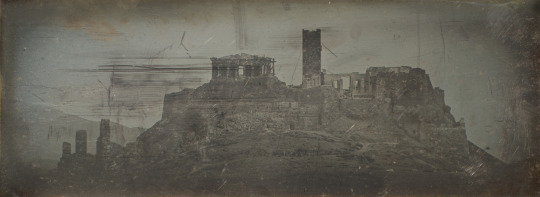
“Athènes. Acropole. Côté O.” by Joseph-Philibert Girault de Prangey, 1842
2 notes
·
View notes
Text
Photography in the Eternal City
John F. McGuigan, coauthor of In Light of Rome, discusses Rome and its relation to the development of photography.

This exhibition catalogue investigates the role that the Eternal City played in the aesthetic development of photography within the vibrant international community of mid-nineteenth-century Rome—the academic institutions, artists’ studios, bohemian caffè life, and mercantile establishments––that valued photography’s pictorial effects as much as its overt recording and didactic functions.
My fascination with Roman photography sprang out of my interest in costume studies of professional models wearing traditional local outfits that artists used to draw and paint either as sources of inspiration or to incorporate into their paintings or sculpture. Rome had traditionally been a center for this type of study, with an illustrious history of making figural art from antiquity, through the Renaissance and baroque periods, to neoclassicism, as well as the hub of a sophisticated network of art academies, life schools, galleries, and studio buildings where transnational trends in art were fostered and disseminated. The advent of photography radically changed—and largely negated—this centuries-old artistic practice by providing artists with an inexpensive, time-saving, and readily available alternative. Countless artists in Rome looked at the new medium pragmatically, as a valuable tool that could complement and simplify their work, while others adopted it as their primary creative outlet, expanding its pictorial effects as much as its overt recording and didactic functions.
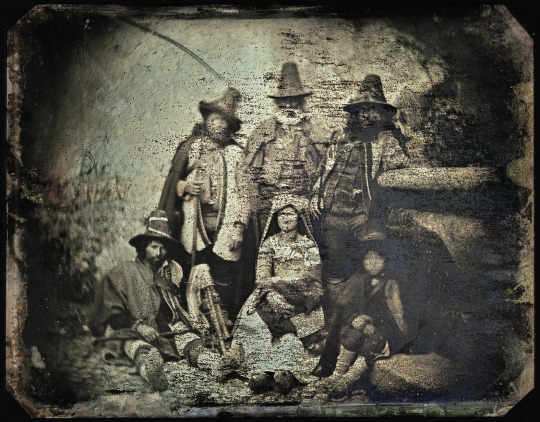
One of the pioneer photographers in Rome was Joseph-Philibert Girault de Prangey (1804–1892), a French artist, amateur archaeologist, and architectural historian. During his three-month stay in spring 1842, he made over three hundred daguerreotypes throughout the city as part of his larger program of documenting ancient buildings throughout the Mediterranean region. His Pifferari is, to my knowledge, the earliest known daguerreotype of models to have been made in Rome. It depicts a grouping of four men with bagpipes, a woman, and a young boy dressed in the rural costumes of the surrounding countryside. As professional models, they were accustomed to maintaining static poses for long periods, but even they could not entirely stop breathing during the exposure time that lasted several minutes, which accounts for the almost imperceptible blurring of the final image. Nor could Girault have anticipated the sudden gust of wind that occurred when he removed the plate from his camera, depositing particles of dust that permanently marred its silvered surface. Despite its compromised condition, this daguerreotype endures today as a testament to the remarkable confluence of art, technology, and the quest for mimetic accuracy that made photography so attractive to artist-travelers in the mid-nineteenth century.
A decade after Girault’s extraordinary photographic campaign through Rome, Giacamo Caneva (1813–1865), who had originally been a landscape painter, created another group photograph of models that possesses spontaneity, movement, and picturesqueness and demonstrates the great scientific and artistic leap presented by the calotype process. In contrast to the daguerreotype, which produced a single positive image, the calotype generated a paper negative from which multiple positive images could be printed. The calotype signified the advent of paper photography, which transformed the field through its greater portability, affordability, reproducibility, and rapidity, with exposure times under fifteen seconds. It was especially esteemed by painter-photographers for its similarity to other works on paper, such as drawings and etchings, which contributed to elevating the new medium from a scientific curiosity to an equal branch of the fine arts. The Caneva image successfully updates the time-honored tradition of costume studies for use by artists and speaks to the ongoing importance of mid-nineteenth-century Rome as a cosmopolitan capital of the art world.
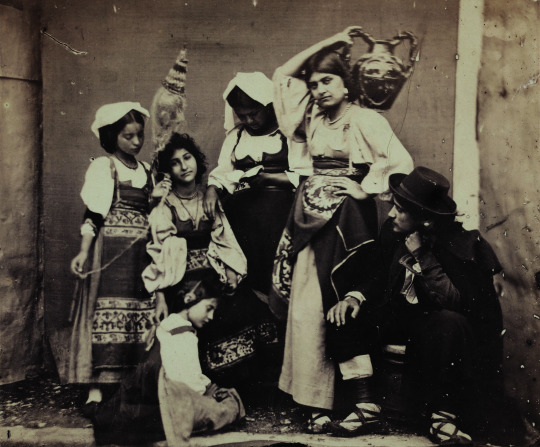
In Light of Rome: Early Photography in the Capital of the Art World, 1842–1871 is now available from Penn State University Press. Find more information and order the book here: https://www.psupress.org/books/titles/978-0-271-09488-5.html. Save 30% w/ discount code NR23.
2 notes
·
View notes
Text
Earliest known photo of a Jerusalem,taken by Joseph-Philibert Girault de Prangey in 1844

#jerusalem#photo#vintage phohography#vintage#1844#old photography#old photo#black and white photo#photography is art#black and white#art#vintage vibes#photografy#photography
10 notes
·
View notes
Text
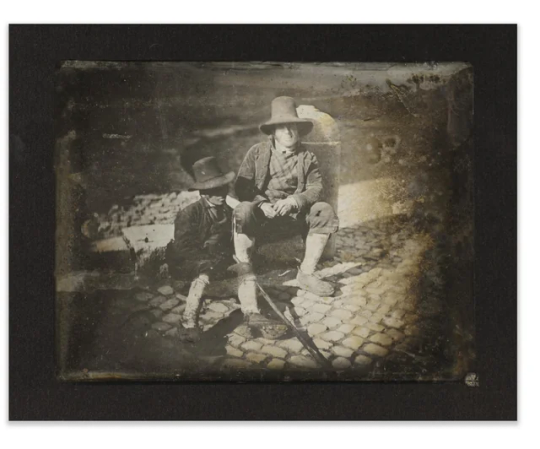
Dos campesinos de la región alrededor de Roma. Un daguerrotipo de Joseph-Philibert Girault de Prangey, 1842.
0 notes
Text
Das vielleicht erste Foto Jerusalems
gesehen auf twitter:
… aufgenommen 1844 vom französischen Fotografen Joseph-Philibert Girault de Prangey. Bis die Juden zurückkehrten und Jerusalem verehrten und es in eine blühende Metropole verwandelten, kümmerten die Araber sich nicht darum oder hatten kein Interesse daran. Zurückkehrende Juden machten das Land Israel wieder jung.
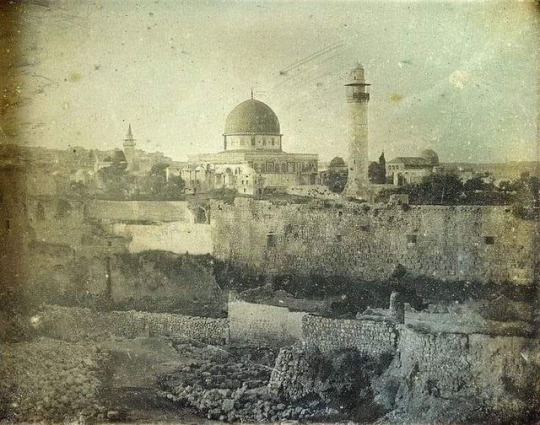
View On WordPress
1 note
·
View note
Text
youtube
In 1842, artist, architectural historian, archaeologist, and pioneer photographer Joseph-Philibert Girault de Prangey (1804–1892) embarked on a three-year photographic excursion throughout the Eastern Mediterranean, and he returned to France with more than one thousand daguerreotypes—an unparalleled feat in the history of photography. Among the images he created are the earliest surviving photographs of Greece, Egypt, Turkey, Lebanon, Syria, and Jerusalem and among the first daguerreotypes depicting Italy.
1 note
·
View note
Text
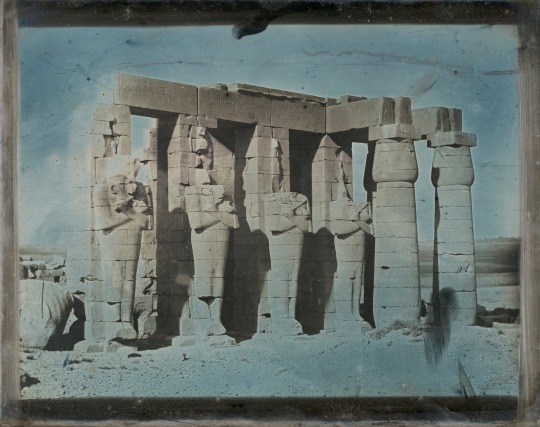
Joseph-Philibert Girault de Prangey (French, 1804-1892)
Ramesseum, Thebes, Daguerreotype
1844
#Joseph-Philibert Girault de Prangey#french artist#french art#french photographer#French photography#daguerreotype#vintage photography#ancient history#egypt#thebes#ancient egypt#egyptian art#early photography#egyptian history#art history#aesthetictumblr#tumblraesthetic#tumblrpic#tumblrpictures#tumblr art#tumblrstyle#artists on tumblr#aesthetic#modern art#photo aesthetic#beauty
28 notes
·
View notes
Text

Joseph-Philibert Girault de Prangey, [Mosque, Cairo, Egypt], 1843, Daguerreotype, Bibliothèque Nationale de France, Département des Estampes et de la Photographie, Réserve EG2- 701., LL/62078
#cairo#mosques#1800s#1840s#art history#world history#history#france#cartoon#free gaza#free palestine#news#updates#Black and White#quotes#inspirational quotes#life quotes#Rachel#corrie#photographers on tumblr#يوم الأرض#land day#Avatar#ART#VINTAGE#april fools#AP#April Fools Day#Illustration#GIF
22 notes
·
View notes
Text
Research Re-edited Architecture
• Research, identify and present examples of early architectural photography
Nelson’s Column under Construction, Trafalgar Square by William Talbot

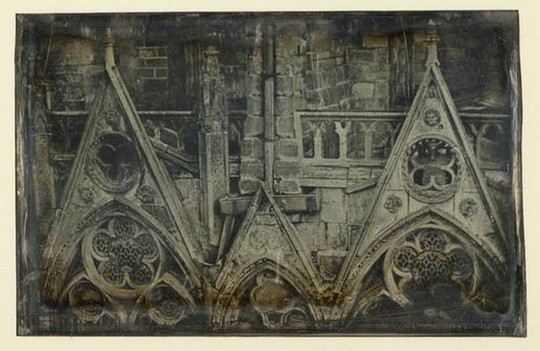

William Talbot was a photographer who's work became historical for some of the earliest findings in photographing construction on film as you can see the developed soft sepia tones of the imagery its true to its time.
''Joseph-Philibert Girault de Prangey (21 October 1804 – 7 December 1892) is known as the first architectural photographer who started to take photographs with daguerreotype from early 1841 of significant sites like Paris, Egypt, Greece, Palestine, Syria, and Turkey.''-https://www.re-thinkingthefuture.com/architectural-community/a2467-a-brief-history-of-architectural-photography/
Looking at historical photography I am reminded that alot of the works of art and structure are made in thought of the integral process of protecting and displaying the building in its truest form thinking of the work I have researched such as Henri Cartier Bresson
Often when researching I have found alot of works of photographs of buildings in soft daylight with minimal flash or digital corruption, when photographing stained glass windows for example flash could never be used as this would reflect or taint the image in a way that could not be changed.
https://www.re-thinkingthefuture.com/architectural-community/a2467-a-brief-history-of-architectural-photography/
0 notes
Photo

Joseph-Philibert Girault de Prangey
The Probatic Pool, Jerusalem
417 notes
·
View notes
Photo

Young woman holding a flower (circa 1842).
Daguerreotype by Joseph-Philibert Girault de Prangey (French, 1804–1892).
Image and text information courtesy The Met.
#early photography#Daguerreotype#Joseph-Philibert Girault de Prangey#19th century photography#portrait photography
80 notes
·
View notes